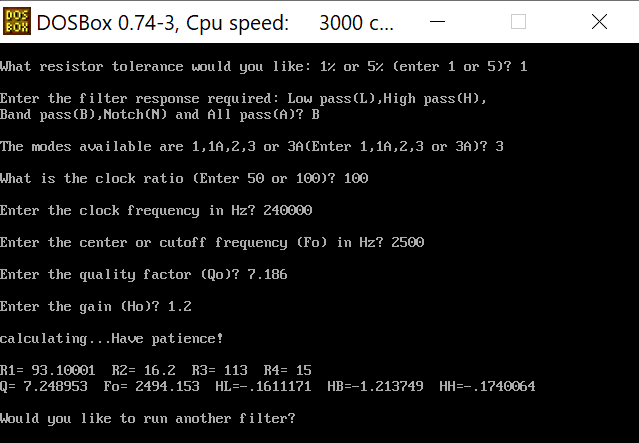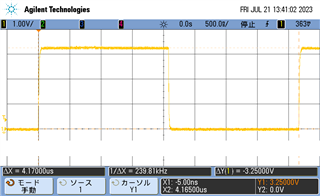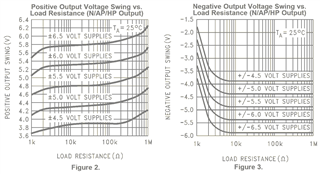Other Parts Discussed in Thread: LMF100
Hi,
MF10-N BPF doesn't work according to the design. Help please.
The following schematic is it:

This is an 8th order chebyshev band-pass filter, in which every stage
runs in the mode 3 with the 100:1 clock, and I'm sure I designed it so
as to run with the 0dB gain in the pass-band. The clock supplied is
typically 240kHz, the duty ratio is exactly 50% because of 1/2 divider.
The bode plots shown there are the ones that the LTspice calculated
using the spice model LTC1060, as known as mostly compatible with
MF10-N.
However, the actual gain is too large and the pass-band-width looks
too narrow. The 1st stage, i.e., "IN" through "TP1", behaves especially
funny. The Hobp is calculated as R3*/R1*, so the peak gain should be
near to 180k/150k in the 1st stage, but actually it is too peaky as
shown below:

Does anyone know what I failed?
Thanks in advance.
Regards,





